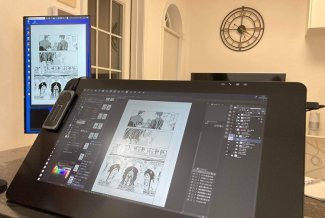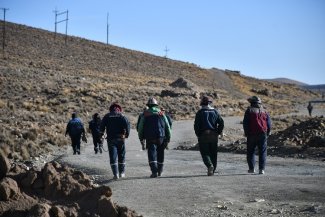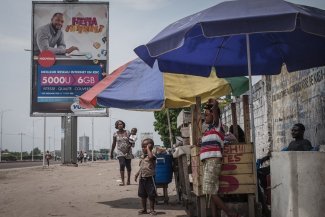Russian authorities will reverse a number of controversial cost-cutting measures following protests, work stoppages and even hunger strike action by beleaguered health care staff.
Numerous proposed hospital closures have been rescinded and authorities are promising to increase the amount paid out to some of the estimated 14,000 medical staff that will lose their jobs between 2015-2017 in Moscow alone as a result of “optimisation” measures.
But the government vows to continue what it describes as an attempt to modernise Russia’s Soviet-era health care system, while cutting costs and making it more accessible to ordinary people.
Healthcare in Russia is free under a compulsory medical insurance scheme but over the past five years, Russia’s healthcare system has been gutted by massive layoffs.
In Moscow alone, some 9,500 medical staff were made redundant in 2014. Nationwide, that figure is though to be around 90,000.
In terms of actual hospitals and clinics, according to the Moscow Times, between 2005 and 2013, “the number of health facilities in rural areas fell by 75 per cent from 8,249 to 2,085. That number includes a 95 per cent drop in the number of district hospitals, from 2.631 to only 124, and a 65 per cent decline in the number of local health clinics, from 7,404 to 2,561”.
Staff complain of personnel shortages, increased overtime and stress for the remaining employees, which, in turn, has raised questions about availability and quality of health care.
Most worrying, these massive job cuts are thought to have had a devastating impact on mortality rates. According to the Auditing Chamber of Russia, 18,000 hospital deaths were linked to the cutbacks.
“The reform has only one aim – to destroy free health care,” says Simon Halperin, a neurologist who was actively involved in anti-reform protests in Moscow. “It is impossible to render a hospital inefficient based on how much money a bed brings to it. No professional doctor would think of such a criterion when taking decision to close the medical institution."
“Skype doctors” backlash
In the face of growing criticism, the Russian government has defend its measures, noting that growing and ageing populations everywhere are resulting in ballooning health care costs worldwide.
But health care cutbacks across the country, and a suggestion from the Minister of Health Veronika Skvortsova to replace local staff with “Skype doctors” in regions where even mobile phones are scarce, have been backfiring.
The watershed moment came in spring 2013 where one protest served as a model for later actions. Workers and members of the Inter-Regional Trade Union of Medical Workers, also known as Deystviye, at various children’s polyclinics in Izhevsk, capital of the Udmurt Republic of the Russian Federation, went on a “work-to-rule strike” (where workers do the bare minimum in order to cause a slowdown without violating the law or interrupting patient care).
Due to staff shortages and an increase in patients, doctors and nurses were working 10-12 hours a day rather than the legislated eight hours. And patient consultations were being limited to a wholly insufficient 2-5 minutes.
“Before the work-to-rule, doctors worked overtime without any pay,’ recalls Ellina Ostanina, a paediatrician and active participant in the action. “We started to work-to-rule and we got results,” she says.
The collective action, which lasted nearly three months and involved 40 doctors led to improved working conditions and more than 1.6 billion rubles (US$23.8 million) of regional and federal funding to provide overtime pay and increase the salaries and benefits of health care workers in Izhevsk.
In 2014, a broad public campaign against the collapse of the Russian health care system was launched by the Deystvie union, the Russian Confederation of Labour (KTR), the Pirogov doctors movement, the ‘Together for Decent Medicine’ protest group and other civil society organisations.
Thousands of doctors took to the streets of Moscow and 46 other cities across the country to protest over the closure of a number of hospitals, maternity centres and specialist departments.
For Boris Kravchenko, president of the KTR, these protests were the last-resort action of workers pushed to the brink, and will only stop when the authorities are ready to consult them on the tumultuous changes taking place.
"We demand consideration of all our requests, transparent public discussion of the strategy and content of the reform," Kravchenko said at the time. "Prior to the start of full-fledged discussions, we demand a freeze to the process of massive layoffs, a recall of the dismissal notices received by doctors, and the prevention of similar practices in other regions of Russia".
Authorities climb down
When city authorities understood that the protests were likely to expand, they reversed the decision to close several hospitals and clinics and promised to provide bigger payoffs to those dismissed: 500,000 rubles (US$7,400) for doctors, 300,000 rubles (US$4,400) for paramedics and 200,000 rubles (US$2,900) for nurses.
In January 2015, the Moscow City government deputies and officials hastily reported that they had managed to quell the discontent with the reforms. According to the mayor’s office, “payment orders" were issued to physicians, totalling 2.69 billion rubles (US$40.1 million). However, representatives of the medical community said that in reality the situation is far from being resolved.
Executive Secretary of the Deystvie union, Andrey Konoval, told reporters that most doctors “see personal financial compensation as secondary. They are worried about the fate of health institutions, where they spent years of their professional life, the fate of the patients and the entire health care system”.
But even those who have managed to keep their jobs are struggling to keep up apace with the newly ‘optimised’ system. Yekaterina Chatskaya, a Moscow-based gynaecologist said: "Consulting a pregnant woman should take 30-40 minutes. Now the electronic system automatically forces us to fit in consultations every 15 minutes.
“During this time I have to examine the patient, fill in all the papers, prescribe treatment and to tell the patient what to do next.” She says that some doctors have resorted to taking their paperwork home in order to give themselves more time with their patients.
Following the roll-out of “work-to-rule” action at six medical centres in Moscow, at the end of August 2015 the Russian Health Ministry issued a decree to ensure that realistic standards are set for the reception time of patients. But critics warn that decrees are one thing; implementation is quite another.
As it stands, both healthcare professionals and the government are in a deadlock.
Moscow authorities have launched more reforms in the form of “pilot projects” to reorganise the city’s clinics but critics are resisting these measures saying they will only lead to another sweatshop system. As a result, more protests lie ahead.









